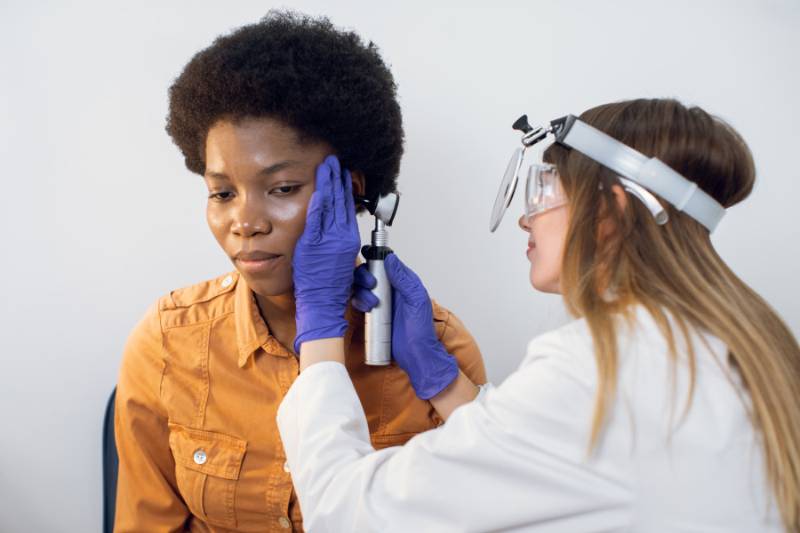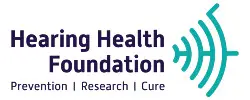Introduction
Caring for someone with conductive hearing loss involves understanding the challenges they face and finding ways to enhance their everyday life. In this blog post, we will explore various strategies and tips to improve living conditions, ensure safety, and promote overall well-being for individuals with conductive hearing loss. By adapting the home environment, providing guidance for driving and travel, understanding the relationship between physical activity and hearing loss, and exploring the potential impact of diet, we can support individuals in their journey to navigate conductive hearing loss.
RCA OTC Hearing Aid Pair
Experience the world like never before with the RCA OTC Behind-the-Ear Hearing Aid. Our advanced digital technology ensures that every sound is crystal clear and vibrant, allowing you to fully immerse yourself in life’s experiences. Whether it’s the laughter of loved ones or the music that moves you, our hearing aid brings back the joy of every moment.
Say goodbye to the hassle of appointments and prescriptions. The RCA OTC Hearing Aid is designed to meet the needs of individuals without the need for a prescription. With its seamless setup and user-friendly design, you can effortlessly enhance your hearing abilities and stay connected to the world around you. Simply unpack, wear, and enjoy improved auditory perception instantly.
Experience optimal comfort and style with our discreet behind-the-ear design. The thin tube design allows you to wear glasses comfortably, so you can enjoy clear hearing while maintaining your personal sense of style. Plus, our rechargeable battery ensures long-lasting power, eliminating the inconvenience of constantly replacing small batteries. Elevate your hearing experience with the RCA OTC Hearing Aid and embrace the world with confidence.
Adapting Your Home for a Better Living with Conductive Hearing Loss
Creating an environment that is conducive to better hearing can significantly improve the daily life of someone with conductive hearing loss. Here are some practical tips for adapting the home:
Reduce background noise: Minimize background noise by using curtains, rugs, and soft furnishings to absorb sound. Consider investing in soundproofing materials for walls, ceilings, and floors to create a quieter environment.
Enhance visual cues: Use visual aids, such as clear signs or labels, to indicate the function of different switches, appliances, or areas in the home. This helps individuals with conductive hearing loss easily navigate their surroundings and locate important items or areas.
Assistive devices: Explore assistive technologies designed for home use, such as amplified telephones, doorbell signalers, or vibrating alarm clocks. These devices can help individuals with conductive hearing loss stay connected and maintain independence in their daily activities.
Adapting the home environment to accommodate the specific needs of someone with conductive hearing loss can greatly enhance their comfort and overall quality of life.
Hearing Loss and Driving: Safety Tips for Those with Conductive Hearing Loss
Driving requires good hearing for safety and awareness on the road. Here are some safety tips for individuals with conductive hearing loss who drive:
Regular hearing checks: Schedule regular hearing assessments to monitor changes in hearing abilities. It is crucial to be aware of any deterioration in hearing that may affect driving safety.
Use visual cues: Pay attention to visual cues on the road, such as traffic lights, road signs, and the movement of other vehicles. Visual awareness helps compensate for any hearing limitations.
Utilize assistive devices: Consider using assistive devices designed specifically for driving, such as visual or vibrating alerts for turn signals, backup cameras with visual displays, or Bluetooth-enabled hearing aids that can connect to the car’s audio system.
Limit distractions: Minimize distractions inside the car, such as loud music, conversations, or excessive use of electronic devices. Maintaining a quiet and focused environment helps individuals with conductive hearing loss stay alert and attentive while driving.
By implementing these safety tips and utilizing assistive technologies, individuals with conductive hearing loss can drive safely and confidently.
What to Look for in Inexpensive Hearing Aids
Traveling with Conductive Hearing Loss: A Comprehensive Guide
Traveling can be an exciting experience, but it can also present unique challenges for individuals with conductive hearing loss. Here are some tips to ensure a smooth and enjoyable travel experience:
Plan ahead: Research and plan your travel arrangements in advance. This includes booking accommodations and transportation that are accessible and accommodating to individuals with hearing loss. Inform the airline, hotel, or tour operators about your specific needs to ensure a comfortable and inclusive experience.
Communication tools: Carry essential communication tools, such as written communication cards or mobile apps that facilitate text-based conversations. These tools can help bridge the communication gap in situations where verbal communication may be difficult.
Notify travel companions: Inform your travel companions about your hearing loss and the strategies that work best for effective communication. Encourage them to be patient, understanding, and supportive throughout the journey.
Safety considerations: Be mindful of safety considerations while traveling. Keep your hearing aids or other assistive devices in good working condition and carry spare batteries or charging equipment. Familiarize yourself with emergency procedures and communicate any specific needs to the relevant authorities.
By planning ahead, utilizing communication tools, and prioritizing safety, individuals with conductive hearing loss can have a rewarding travel experience while minimizing potential challenges.
Conductive Hearing Loss and Physical Activity: What You Should Know
Engaging in physical activity is essential for maintaining overall health and well-being. Individuals with conductive hearing loss can also participate in various forms of exercise and recreational activities. Here are some considerations to keep in mind:
Communication during group activities: In group settings, inform the instructor or group leader about your hearing loss. They can make accommodations, such as using visual cues or providing written instructions, to ensure effective communication and participation.
Safety precautions: Be aware of your hearing limitations when engaging in physical activities that require situational awareness, such as team sports or outdoor adventures. Consider wearing protective gear, such as helmets or goggles, to safeguard against potential injuries.
Assistive devices: Depending on the nature of the activity, individuals with conductive hearing loss may choose to wear hearing aids or other assistive devices that are designed to be durable and resistant to sweat or moisture. Consult with your audiologist to explore suitable options.
Enjoyment and comfort: Choose activities that you enjoy and that align with your comfort level. Engaging in physical activities that bring you joy not only promotes physical health but also contributes to overall well-being.
By understanding the considerations and making necessary adaptations, individuals with conductive hearing loss can participate in physical activities and lead an active lifestyle.
11 ways to improve sleep better with tinnitus
Conclusion
Living with conductive hearing loss requires adapting various aspects of everyday life to ensure comfort, safety, and overall well-being. Adapting the home environment, practicing safety measures while driving, and considering the impact of travel, physical activity, and diet can significantly enhance the lives of individuals with conductive hearing loss. By implementing these strategies, caregivers and individuals themselves can create an environment that promotes independence, inclusivity, and optimal living conditions.
Living with conductive hearing loss requires thoughtful considerations and adaptations in various aspects of life. By adapting the home environment, ensuring safety while driving, planning for travel, participating in physical activities, and being mindful of diet, individuals with conductive hearing loss can enhance their overall quality of life. It is important to prioritize inclusion, accessibility, and personal well-being to foster a supportive environment that promotes independence and happiness.

Navigating the Crossroads: Sensorineural Hearing Loss and Its Intricate Ties with Other Conditions
Navigate the intricate connections of sensorineural hearing loss with conditions like tinnitus, Meniere’s disease, diabetes, cardiovascular health, autoimmune diseases, and ototoxic medications. Unravel these ties to better understand and support your child’s unique health journey

Unravel the Complexities of Mixed Hearing Loss: A Detailed Guide
Explore the intricacies of Mixed Hearing Loss, including its causes, diagnosis, and innovative treatment options for a better quality of life.








